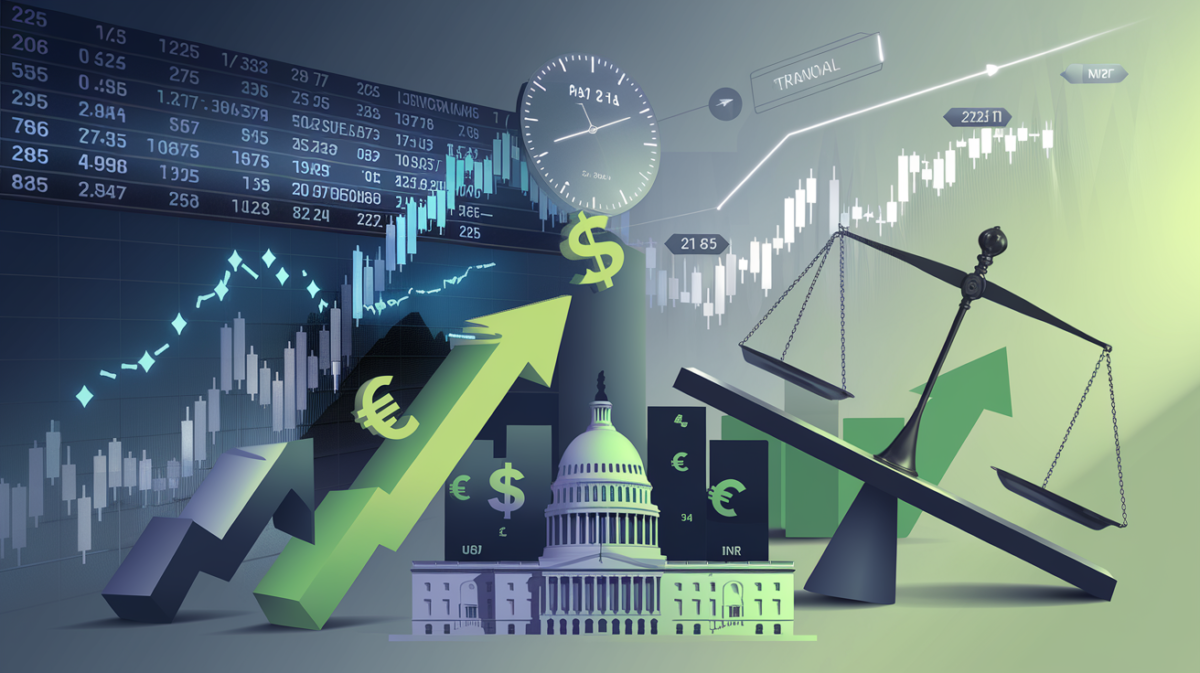On May 22, 2025, U.S. financial markets witnessed a mixed performance as Treasury yields eased and stocks showed modest gains. Investors are weighing the implications of a newly passed tax and spending bill, which has sparked debates over its fiscal impact and long-term economic consequences.
Treasury Yields and Stock Market Performance
The 30-year Treasury bond yield reached 5.108%, its highest level since 2023, before easing slightly. Meanwhile, the stock market displayed cautious optimism:
- The S&P 500 closed nearly flat at 4,511.24.
- The Dow Jones Industrial Average rose by 0.4% to 44,511.24.
- The Nasdaq Composite dipped by 0.2% to 19,670.47.
Market analysts attribute the subdued reaction to uncertainty surrounding the fiscal bill’s long-term effects on the economy.
House Passes Sweeping Tax and Spending Bill
In a narrow 215-214 vote, the Republican-led U.S. House of Representatives approved a comprehensive tax and spending package. Key provisions include:
- Corporate and individual tax cuts.
- Increased military and border enforcement funding.
- Limited incentives for green-energy initiatives.
- Tighter eligibility requirements for federal aid programs.
The bill is projected to add $3.8 trillion to the national debt over the next decade, raising concerns among fiscal conservatives and investors alike. It now heads to the Senate, where Republicans hold a slim majority and may push for further amendments.
Investor Sentiment and Market Reactions
Investors are closely monitoring the bill’s potential to stimulate economic growth versus its impact on the national deficit. JPMorgan Chase CEO Jamie Dimon voiced cautious optimism, stating that while the bill could stabilize the economy, it risks exacerbating the deficit. “Responsible spending is critical to avoid stifling long-term growth,” Dimon remarked.
The market’s reaction has been nuanced, with some sectors benefiting from the prospect of tax cuts while others brace for inflationary pressures.
Comparison of Market Reactions
| Market Indicator | Performance | Key Driver |
|---|---|---|
| S&P 500 | Flat | Mixed sentiment on tax cuts |
| Dow Jones | +0.4% | Optimism in industrial sectors |
| Nasdaq | -0.2% | Tech sector cautious on deficit concerns |
Global Market Ripple Effects
The U.S. fiscal developments have reverberated across global markets:
- Canada: S&P/TSX futures edged down 0.09% as investors assessed the bill’s implications for trade and fiscal policy.
- India: The rupee fell to 86.0025 against the U.S. dollar, its lowest in over a month, amid concerns about U.S. fiscal health.
These movements underscore the interconnected nature of global financial markets and the outsized influence of U.S. policy decisions.
What’s Next for Markets?
Investors are now turning their attention to upcoming inflation data and central bank announcements, which could further shape market dynamics. The focus remains on:
- The Senate’s revisions to the tax bill.
- Potential inflationary pressures from increased government spending.
- Global market stability in response to U.S. fiscal trends.
As the debate over fiscal responsibility continues, markets are likely to remain volatile in the near term. The balancing act between economic stimulus and debt management will be a defining theme for the rest of 2025.







